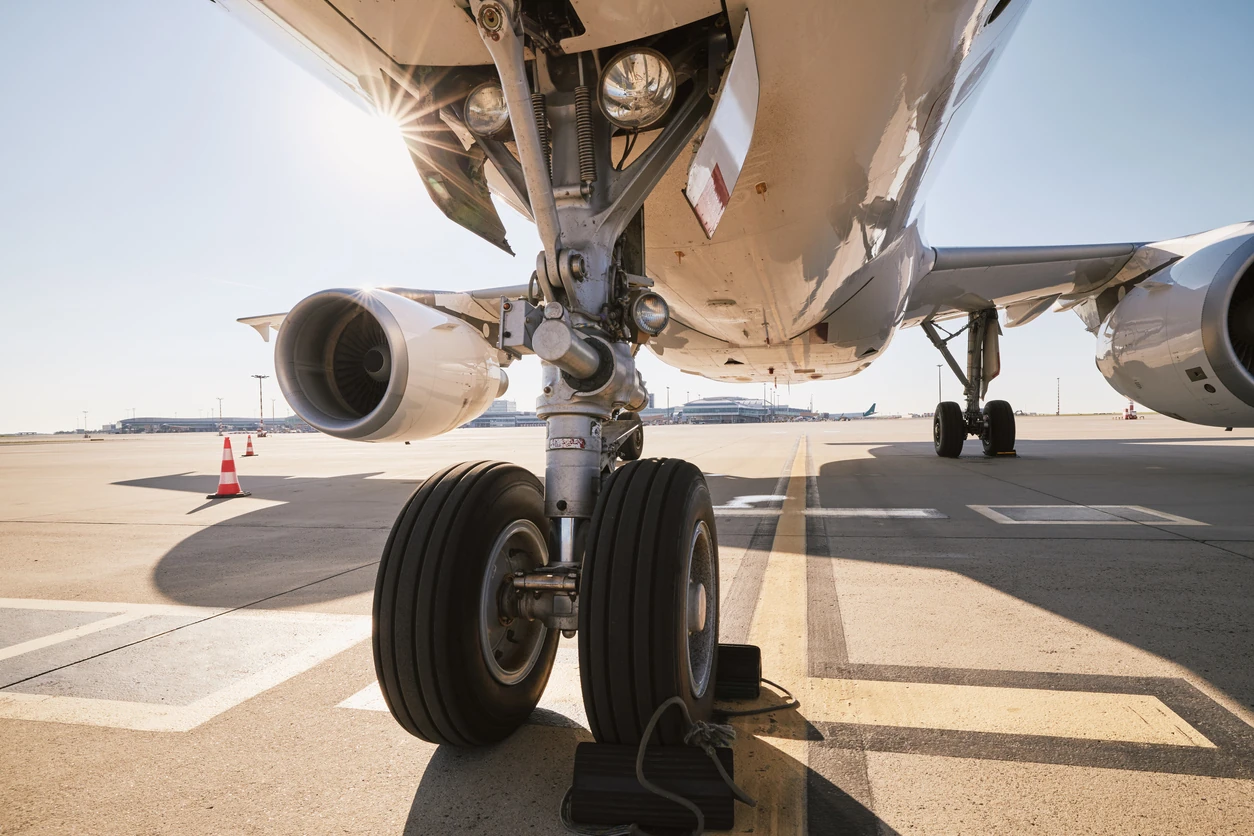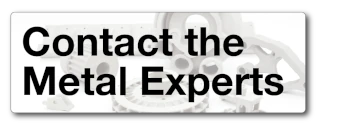
Binder Jetting vs. DMLS in Aerospace
Without a doubt, binder jetting and direct metal laser sintering (DMLS) are the two largest metal 3d printing solutions. While DMLS is more well-known than binder jetting, it isn’t always the best option.
In this blog, we’ll dive into the ins and outs of both processes, discuss the pros and cons, and help you uncover which is best – binder jetting or DMLS for aerospace applications.
What is Direct Metal Laser Sintering?
Direct metal laser sintering is an additive manufacturing technique that 3D prints parts from metal powder. The direct metal laser sintering process shares similarities with binder jetting and can be broken down into five steps:
Step 1: 3D modeling
Step 2: Powder bed preparation
Step 3: Laser melting
Step 4: Layer-by-layer building
Step 5: Post-processing
Step 1: 3D Modeling
Before DMLS can begin, a 3d model or CAD model needs to be produced to act as the blueprint for the final component. Once the model is complete, production can start.
Step 2: Powder Bed Preparation
The direct metal laser sintering process starts with a thin layer of metal powder spread out across the platform. The material you choose depends on the desired final properties.
Step 3: Laser Melting
Next, a high-powered laser is precisely pointed at the metal powder to melt and fuses the particles together – creating the first layer of the part.
Step 4: Layer-by-Layer Building
After each layer is melted and fused into place, another layer of metal powder is added then the process repeats until the part is complete.
Step 5: Post-Processing
Once the entire object is formed, the part cools down and post-processing can begin. However, with DMLS post-processing is very minimal and not always required.
While direct metal laser sintering is more well-known than binder jetting, it’s not always the preferred method.
What is Binder Jetting?
Binder jetting is known as the fastest additive manufacturing process for producing metal parts. The binder jetting process typically involves four main steps:
- Powder bed preparation
- Inkjet printing
- Layer-by-layer building
- Post-processing
1. Powder Bed Preparation
Similar to DMLS, a thin layer of powder material is spread evenly over the platform. The material is typically metal but can be polymer or ceramic.
2. Inkjet Printing
Instead of a laser used to fuse the powder, binder jetting uses an inkjet printhead to deposit a binder onto the powder. This binder will adhere the particles together in the desired shape of the 3D model.
3. Layer-by-layer Building
Binder jetting follows the same layer-by-layer concept as DMLS. Instead of using the laser to fuse each particle into place, the inkjet printhead applies binder to each layer and repeats until the part is formed.
4. Post-Processing
After the process is complete, the object is taken to post-processing to form its final strength and properties.
Advantages of Binder Jetting
With many 3D printing options to choose from, why are manufacturers choosing binder jetting?
There are several reasons. The main advantages of binder jetting are:
- Speed capabilities – the ability to print components more quickly
- Heatless operation – the lack of heat generated from the operation
- Vast material selection – the ability to choose from a wide variety of print materials
- Lightweighting parts – the capability to produce lightweight, but durable components
Speed Capabilities
The inkjet printhead is able to apply the binder to large areas at one time very quickly, making the process much faster than other 3D printing operations. As a result, binder jetting can produce larger size parts in higher quantities.
Heatless Operation
Binder jetting is a heatless operation that performs at room temperature.
Why is this beneficial?
Oftentimes, parts become distorted due to thermal fluctuations. When heat is eliminated, that’s no longer a concern.
Vast Material Selection
Instead of limiting your options, binder jetting allows for metals, ceramics, and even some polymers to be used.
Additionally, binder jetting uses both a binder and powder material. This allows for even further customization since you can choose from multiple binder and powder combinations.
Lightweighting Components
Binder has the ability to produce lightweight parts which is critical in the aerospace industry when weight is extremely limited.
Disadvantages of Binder Jetting
Although binder jetting has its advantages, there are also downsides to the process. The two most common disadvantages include:
- Surface finishes require post-processing
- Material choice impacts the mechanical properties
Surface Finish Requires Post-Processing
As with other additive methods, if you don’t do post-processing, you may end up with a rough surface finish or weak part.
Material Choice Impacts the Mechanical Properties
The material you choose directly impacts the final part’s mechanical properties. While the ability to choose is typically an advantage, if a mistake is made, the mechanical properties could be poor and impact the final part.
Before getting started and choosing your material, consult with an expert to determine which material is best for your application.
Advantages of Direct Metal Laser Sintering
DMLS is widely used across several industries, but what are the benefits? DMLS has three main advantages:
- Accuracy and precision with near-net shape parts
- Minimal post-processing is needed, aside from surface finish
- Producing extremely lightweight components
Accuracy and Precision
Since DMLS produces near-net shape parts, they are highly accurate and precise. The process is also repeatable, so you have consistent parts every time.
Minimal Post-Processing Needed
DMLS produces parts that are already near-net shape. However, the surface finish is still rough compared to traditional methods. Depending on your application, some post-processing may be necessary to improve the surface finish.
Lightweighting Components
Similar to binder jetting, DMLS has the ability to produce extremely lightweight parts. In fact, it actually decreases the processing time and expenses when the part is smaller.
Disadvantages of Direct Metal Laser Sintering
DMLS has its pros, but there are also cons to the process. The most common challenges with DMLS include:
- Surface finish optimization
- Size limitations
- Slower production time
Surface Finish
When designing any part, lots of time needs to be spent to ensure the final design is perfect – with DMLS, this time is essential.
Since DMLS adds to the part layer-by-layer, “stair-stepping” can appear on the surface of the final part. Fortunately, you are able to orient the part to minimize the impact, but it’s not a guarantee or 100% effective. Optimizing your design to hide the “steps” is necessary to produce the most precise part.
Size Limitations
Parts produced by DMLS are limited to the size of the machine’s build plane, which tends to be around 10 inches.
What does this mean for production?
If you’re producing a 9-inch part, you can only produce one at a time. However, if you’re producing ten 1-inch parts, you can produce them all at once. The quantity of parts able to be produced depends on the size, which is a downfall if you’re looking to produce larger components.
Slower Production Time
If you have larger parts that need to be produced one at a time, the production is going to take longer than producing several parts at once. However, even when producing multiple components at a time, the DMLS process itself can take several days, which is slower than other methods.
Binder Jetting vs. DMLS in Aerospace
Both binder jetting and DMLS are widely used across several applications, but which is better for aerospace?
In the aerospace industry, it’s critical to have thermally stable, durable, wear-resistant parts that can be produced quickly.
With the ability to quickly produce durable parts and remain at room temperature through the process, binder jetting for aerospace is the solution.
Getting Started with 3D Printing
Deciding between binder jetting vs. DMLS in aerospace can be a tough decision. It’s important to weigh the pros and cons of each process and talk to an expert to ensure you’re making the best decision for your company. Reach out to our team at APG today for more information.

